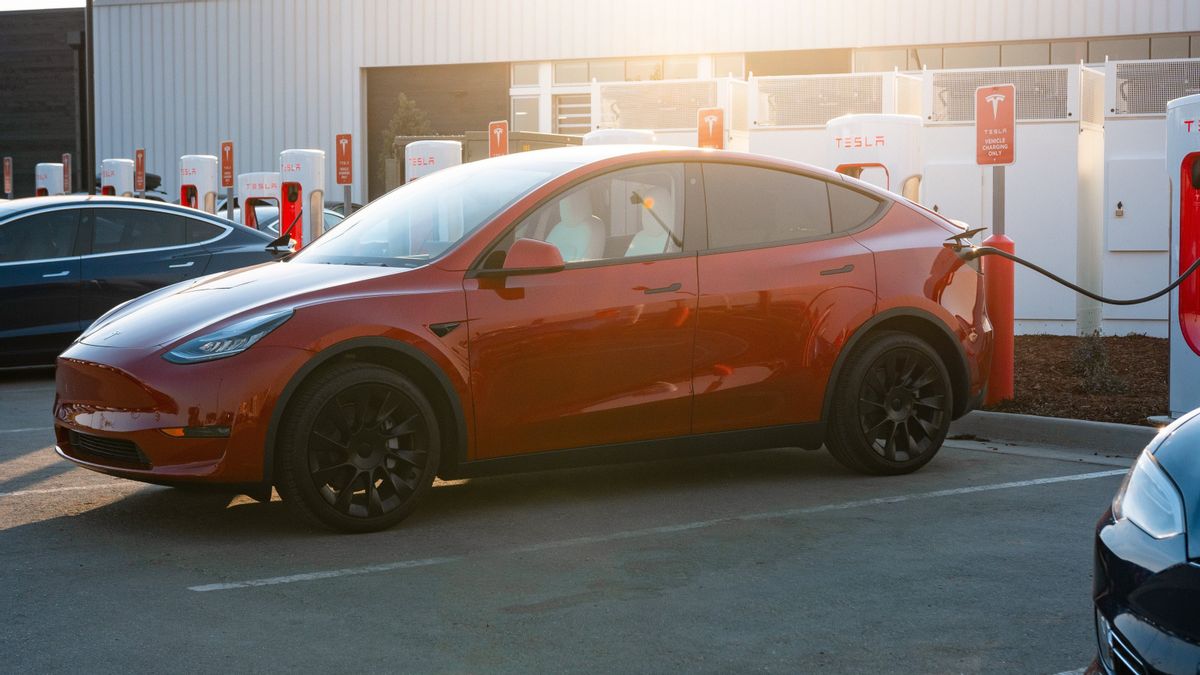JAKARTA - Electric cars are growing in popularity around the world, with many automakers announcing the launch of a new model in the near future. This trend is driven by increasingly high consumer demand for environmentally friendly and low-cost vehicles in the long term.
This electric vehicle is powered by electric power stored in the battery in the car. There are several types of batteries commonly used in electric cars, namely:
The lithium ion battery is the most commonly used battery in electric vehicles. This battery has a large energy capacity and a light weight, making it suitable for use in electric vehicles. The lithium ion battery can be recharged and used repeatedly. However, this battery has a weakness that is flammable in case of damage to its cells.
The nickel-kadmium (Ni-Cd) battery is one type of battery that is often used in electric cars. This battery has the ability to channel large amounts of power and is resistant to extreme temperatures. However, the Ni-Cd battery is not environmentally friendly and its performance tends to decline after several years of use.
The nickel-metal-hydride (NiMH) battery is a type of battery used in several electric vehicles. This battery has a larger energy capacity compared to the Ni-Cd battery and is environmentally friendly. However, the NiMH battery tends to be heavier and takes longer charging time.
How to use batteries in electric cars is quite simple. Drivers only need to charge the battery regularly to maintain the performance and distance of this type of car.
There are two ways to charge the battery, namely by connecting an electric car to a charging station or by charging the battery using a portable charger provided by an electric car manufacturer. Once the battery is fully charged, the driver can start the journey by electric car as usual.
The electric batteries used in electric cars do provide many benefits, such as fuel savings, low emissions, and more efficient energy use. However, along with the increasing use of electric cars, concerns about battery safety are also increasing.
One of the drawbacks to electric batteries is the higher risk of burning than fossil fuels. If the battery is damaged or too hot, they can trigger a fire that is difficult to control, and in electric cars, the fire can cause a very dangerous explosion.
However, there are several ways to reduce the risk of fires on electric car batteries:
Charging for too long or at too high power can cause the battery to become too hot and at risk of burning. Make sure to charge safely and only use a charger approved by an electric car manufacturer.
Temperatures that are too hot or too cold can also cause the battery to become unstable and at risk of burning. Make sure to avoid extreme temperatures and park the car in a place protected from direct sunlight.
Routine care of electric cars can help identify problems with batteries before they become more serious. Make sure to follow the maintenance schedule recommended by electric car manufacturers.
If a fire occurs, make sure to turn off the electricity in the electric car and evacuate the car as quickly as possible. Do not try to extinguish the fire yourself, but immediately contact the firefighters.
In addition, electric car manufacturers continue to strive to improve the safety of their batteries. Several electric car manufacturers use new technologies such as dense, more secure and stable batteries. In the coming years, battery technology will continue to develop, and it is hoped that electric batteries will become more secure and reliable. This is a review of VOI electric cars that are presented from various sources
The English, Chinese, Japanese, Arabic, and French versions are automatically generated by the AI. So there may still be inaccuracies in translating, please always see Indonesian as our main language. (system supported by DigitalSiber.id)











